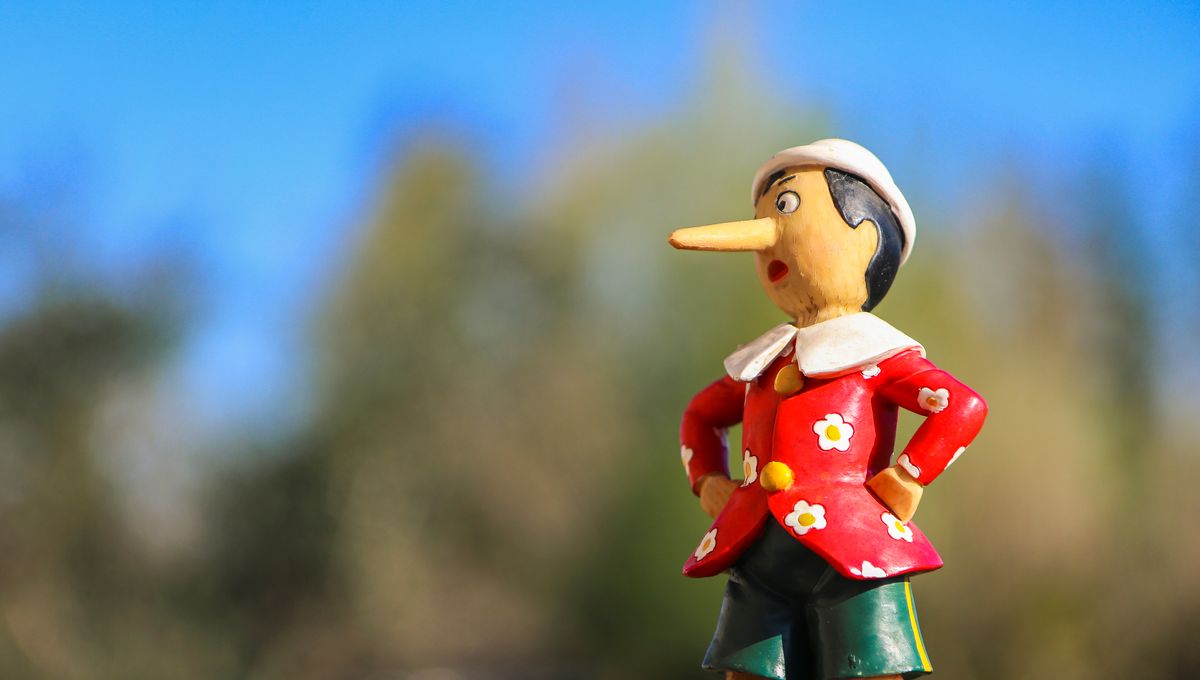
Lying can be pretty difficult to spot, even for the machines that are made to catch liars out. So how can we tell fact from fabrication? Researchers have a few tricks up their sleeves.
Fibbing facial cues
What do you get when you combine big data, machine learning tech, and facial analysis software with a bunch of photos of people being asked questions? The ability to tell if their answers are truthful, it turns out.
A team from the University of Rochester captured 1.3 million frames of the facial expressions of volunteers, who were either lying or telling the truth about what they remembered from pictures they had seen earlier. Automated facial feature analysis software then picked out certain actions, after which the researchers used machine learning to cluster these behaviors into the facial clues of liars versus truth-tellers.
“It told us there were basically five kinds of smile-related ‘faces’ that people made when responding to questions,” said study author Taylan Sen in a statement. The one most often associated with lying was what’s known as the “Duchenne smile”, which involves both eye, cheek, and mouth muscles contracting. It reaches the eyes, making it look pretty genuine, which suggests that people might be taking pleasure in duping others.
But if liars think this information could help them, they’re out of luck. The Duchenne smile involves “a cheek muscle you cannot control,” explained fellow author Eshan Hoque. “It is involuntary.”
Texting tricksters
Of course, we’re not always in the same room as someone when they’re lying to us – people do it over text too, something the online daters among you may be all too familiar with. So how can you differentiate between when someone’s flaking on you and when their hamster has actually died?
Researchers from Cornell University sought to find the answer, analyzing 1,703 text conversations, finding 351 that contained lies. The remaining conversations were then separated into lying and truthful messages and examined for measures such as word frequency, length of the message, and the types of words used (self-words, other-words, noncommittal phrases like “probably” or “maybe”).
The results were revealed in a preprint posted to arXiv, and showed that people tend to use longer sentences when they’re lying over text. There was also a slight increase in the use of personal pronouns like “I” and “myself”, as well as non-committal phrases when people were being untruthful. That’s probably an unsurprising finding to the average Tinder user.
The team also looked at whether there were any differences between students and non-students when it came to lying. Surprisingly, there were. “Students used significantly more words, less other-oriented pronouns, and more non-committal phrases than non-students,” the authors wrote, although they weren’t exactly sure why this was the case.
Clearly, they’ve never had to explain to a professor why an essay wasn’t finished on time.
Distracting the deceiver
If you’ve ever told a lie, you’ll know that sometimes it can require concentration – keeping track of the details, giving off chilled vibes, and trying not to sweat through your t-shirt. According to psychologists from the University of Portsmouth, someone interrupting this concentration can help catch you out.
A group of 164 volunteers was divided into “truth-tellers” and “liars” and were required to convince the researchers of their opinion on a certain controversial topic, such as COVID-19 passports or immigration. Two-thirds of the 164 were also asked to recall a car registration number during the interview.
It was this secondary task that made the liars easier to spot.
“Our research has shown that truths and lies can sound equally plausible as long as lie tellers are given a good opportunity to think what to say,” explained study author Professor Aldert Vrij in a statement.
“When the opportunity to think becomes less, truths often sound more plausible than lies. Lies sounded less plausible than truths in our experiment, particularly when the interviewees also had to carry out a secondary task and were told that this task was important.”
In summary: look out for someone’s smile and see how much they use the word “maybe”, whilst also making them juggle or make you a cuppa. Easy, right?
All “explainer” articles are confirmed by fact checkers to be correct at time of publishing. Text, images, and links may be edited, removed, or added to at a later date to keep information current.
Source Link: What Methods Can You Use To Spot A Liar?